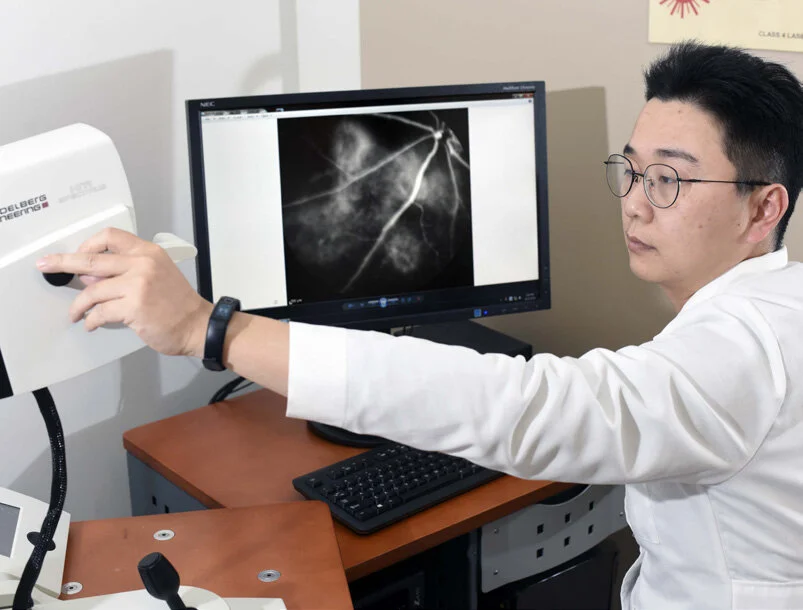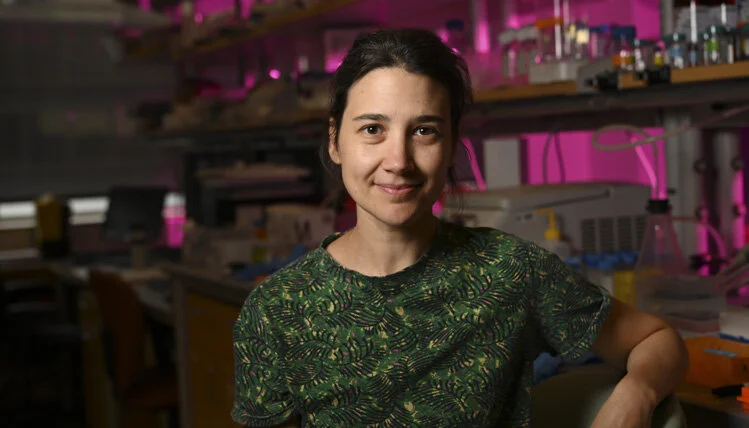Dr. Wang wants to know how to rescue a blinding disease in childhood, called retinopathy of prematurity (ROP). ROP is a disease damaging both vascular and neuronal part of retina, the back part of the eye. This damage leads to significant vision loss or total blindness in infant patients.
Read MoreThese two Golden Chalices were in addition to five memberships to the Grand Master’s Club procured by the Milford Commandery Uniform Store on behalf of five members of Milford Commandery No. 11. The volunteers staffing the Milford Commandery Uniform Store assemble and ship summer uniforms and related clothing throughout the United States and abroad. Available profits are donated to the Knights Templar Eye Foundation annually.
Read MorePrevious studies have shown that “reapplying” mechanisms that are critical for normal development to an injured or diseased environment can promote regeneration of RGC axons; these studies use strategies that work on the front-end, in the eye. However, during development, electrical activity in both ends of the circuit, cells in the eye and cells they connect with in the brain, is essential for accurate wiring. Hence, another promising strategy is to manipulate the electrical activity of target cells in the brain to provide regenerative cues.
Read MoreAnterior uveitis (inflammation in the front of the eye) is the most common form of uveitis in children. Uveitis can lead to vision loss and blindness.
Read MoreFor afflicted children, this disease can be devastating and there are currently no treatments to prevent, let alone cure this disease. However, in last decade there has been much excitement in the development of human stem cell derived retinal cell transplantation clinical trial approaches to treat these diseases.
Read MoreEffective May 17th, 2021 our new address is 3201 Cross Timbers Rd Bldg 4 Ste 300Flower Mound, TX 75028
Read MoreRetinopathy of prematurity (ROP) is one of the most common causes of visual loss in childhood and can lead to lifelong vision impairment and blindness.
Read MoreThe Knights Templar Eye Foundation, Inc. is proud to announce that they have established an endowment at Vanderbilt University Medical Center (VUMC) called -“Knights Templar Eye Foundation Directorship in Pediatric Vision Research.” The Foundation has made a $2 million contribution which is being matched dollar for dollar by VUMC honoring Dr. John S. Penn who will be the inaugural holder of a Directorship supported by this endowment.
Read MoreOur meeting ended with 28 total Competitive Renewal & Career Starter grants for a total of $1,957,897 that was recommended by the SAC doctors and later that night approved by the KTEF SAC committee.
Read MoreThis data will provide an essential molecular entry point from which to further develop methods to promote retinal regeneration through stem cell transplantation and likely have significant influence on the field of retinal regenerative medicine.
Read MoreHis research and study will include another mouse model for RP, in which he will be able to model a prospective gene therapy strategy and perform a rigorous feasibility analysis with my cutting-edge microscopy techniques to see if this strategy could rescue and save the diseased retina.
Read MoreJuvenile glaucoma is usually caused by increased pressure inside the eye, which is due to resistance to the flow of the normal circulation of the fluid within the eye. The buildup of pressure in the eye can damage the visual sensing structures in the back of the eye, leading to blindness. The goal of this project is to better understand the mechanisms involved in the buildup of pressure in the eye. In his research he will be using human cells as well as a mouse model that has similar characteristics to those patients with juvenile glaucoma.
Read MoreThe proposed research seeks to understand the critical signaling events with the MAPK network that bring about RGC death and thus reveal new targets for pediatric glaucoma intervention. It is our hope that these new insights will contribute to new treatment strategies to prevent vision loss.
Read MoreCongenital glaucoma is an eye disease that affects children between the ages of birth and three years. Although the disease is rare, it is one the significant causes of childhood blindness. Congenital glaucoma is usually caused by increased pressure inside the eye, which is due to developmental abnormalities in the front of the eye. The buildup of pressure in the eye compresses the visual sensing structures in the back of the eye, which leads to blindness. The goal of this project is to better understand the mechanisms involved in glaucomatous injury to the eye.
Read MorePediatric glaucoma is a potentially blinding disease, accounting for about 18% of blindness in blind institutions and 5% of overall pediatric blindness worldwide.
Read MoreDr. Guo proposes to use a new CRISPR-based gene regulation technology to overcome these barriers and develop a novel type of gene therapy, with the longterm goal of generating new treatments for blinding diseases in children.
Read MoreThis work will advance the understanding of the fundamental molecular mechanisms underlying fovea formation and contribute to the development of newer therapies for treating congenital foveal hypoplasia conditions.
Read MoreOn October 10, 2020 at the 178th Annual Conclave in Ohio thanks to the generosity of the Sir Knights of Forest City Commandery No. 40 made a major contribution to make the Grand Commandery of Ohio now 200% Life Sponsorships.
Read MoreThe goal of this project is to evaluate a novel technology, eye tracking, as a method for visual assessment in children with CVI. Eye tracking utilizes an infrared camera to capture eye movements while children view pictures and videos. This allows the doctor to non-invasively determine what a child with CVI is able to see, without requiring active participation.
Read MoreThe goals of the study are to initially understand the cause of the disease by studying available models and test gene therapy to replace the defective gene to investigate whether this will prevent retinopathy in the disease model. The ultimate aim is to develop new therapies which will prevent vision loss in children affected by Danon disease.
Read More



















